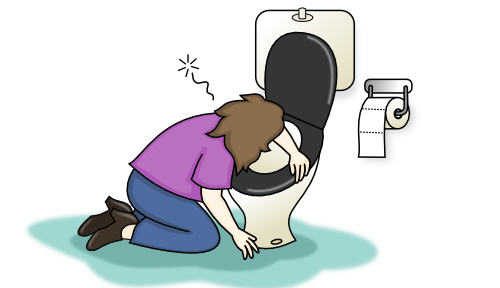
The menstrual cycle is a series of regular changes in the female body that is governed by hormones. Its onset is marked in the adolescent age and is a sign of sexual maturity. Periods are the only visible sign of an efficient functioning of this cycle. The first menstrual period generally occurs in the age-window of 12-15. The exact age, and time for which every period lasts, depends on various lifestyle factors and the overall health of an individual. However, menstruation represents only one phase of the complete cascade.
The ovaries and the uterus function in synchrony during the cycle to maintain the fertility of a woman. Understanding changes that occur in the body during each of the menstrual cycle phases help a woman in timely identification of threats to her reproductive health. This can be particularly important in the case of a medical abortion or while on birth control. This is because the regularity and effective functioning of the menstrual cycle depends on a number of female hormones. And, pills that are a part of the aforementioned medication function on a hormonal basis too.

Changes in the ovary
At puberty, the ovaries contain secretory cellular aggregations called the ovarian follicles. Each follicle contains an immature egg cell (oocyte). The other cells in the association produce estrogen for the maturation of the egg. The estrogen also signals the endometrial lining to thicken. In the phase of the cycle when the follicular stimulating hormone (FSH) attains a surge, the follicles compete for dominance. This period is referred to as the follicular phase. The dominant follicle contains the mature egg cell (ovum).
The continued rise in estrogen levels from the follicles reaches a peak to stimulate the luteinizing hormone (LH). A similar sharp spike is also seen in the levels of FSH. These hormones synergistically cause a rupture of the dominant ovarian follicle to release the egg. The release of egg from the ovary is termed as ovulation and occurs mid-cycle. Near the time of ovulation, a woman may experience
- Thickening of cervical mucus that can be seen in the vaginal discharge
- A raised basal body temperature
- A heightened sense of smell
Ovulation also marks the end of the follicle’s life-span. The ruptured follicle transforms into a cluster of cells that now release progesterone. This cluster is referred to as the corpus luteum and the phase as the luteal phase. The corpus luteum continues to secrete the hormones to maintain the thickened endometrial lining preparing it for implantation of the egg (if fertilization occurs).
The co-ordination of the uterine cycle
The uterine cycle also has three phases; the menses, the proliferative phase and the secretory phase.
The proliferative phase refers to the thickening of the endometrial lining through proliferation of the cells. It coincides with the end of follicular phase of the ovarian cycle. The rise in progesterone level during the luteal phase makes the endometrium more receptive to implantation. This is done by an increased blood flow and increased uterine secretions through enhanced contractility. The occurrence of these changes in the uterus is termed as the secretory phase.
If there is no fertilization during this fertile window, the released egg and the thickened uterus lining are expelled out of the body through the vagina. This is what is referred to as periods and is scientifically termed as menstruation or the menses. Periods are, thus, a sign that a woman is not pregnant. They are characterized by
- Discharge of blood
- Abdominal cramping
- Back/ leg aches
- Breast-tenderness
Some women also experience the pre-menstrual syndrome (PMS) in which irritability increases and they tend to stay in a bad mood.


